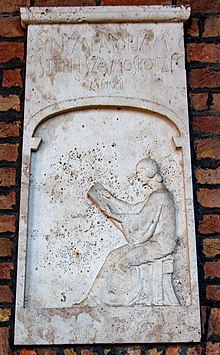István Szamosközy
- View a machine-translated version of the Hungarian article.
- Machine translation, like DeepL or Google Translate, is a useful starting point for translations, but translators must revise errors as necessary and confirm that the translation is accurate, rather than simply copy-pasting machine-translated text into the English Wikipedia.
- Consider adding a topic to this template: there are already 591 articles in the main category, and specifying
|topic=will aid in categorization. - Do not translate text that appears unreliable or low-quality. If possible, verify the text with references provided in the foreign-language article.
- You must provide copyright attribution in the edit summary accompanying your translation by providing an interlanguage link to the source of your translation. A model attribution edit summary is
Content in this edit is translated from the existing Hungarian Wikipedia article at [[:hu:Szamosközy István]]; see its history for attribution. - You may also add the template
{{Translated|hu|Szamosközy István}}to the talk page. - For more guidance, see Wikipedia:Translation.

István Szamosközy, latinised as Stephanus Zamosius (1565–1612) was a Hungarian humanist and historian.
Life
Zamosius was probably born in 1565 in Kolozsvár, Principality of Transylvania (now Cluj-Napoca, Romania).[1] His father moved there from the land between the Szamos and Tisza rivers, the family's place of origin. After his parents' premature death, he was taken care of by László Sombory who sent him as his son's, Sándor's companion to the University of Padua.[2] He studied philosophy and history first in Heidelberg University, then, from 1591 to 1593, in Padua. Zamosius's work as a historian started in 1587 and was heavily influenced by classical writers and humanism, exposed to him in his fatherland, a Protestant center, and Italy.[1]
In 1593 he returned to Transylvania and started to work at Gyulafehérvár for the archive of the Transylvanian court. There he started collecting materials and writing his major work on Hungarian history.
Stephen Bocskai nominated him as the official court historian.
Works
- In Padova he published a Collection of Roman inscriptions in Dacia
- he published also a numismatic treatise
His unfinished Hungarian history was never published but parts are extant in many manuscript copies. Farkas Bethlen saved longer parts in his Transylvanian history. He designed his work based on the example of Antonio Bonfini's Decades (Tenths). Sándor Szilágyi published Zamosius's works in four volumes in Szamosközy történeti maradványai, Budapest 1876–1880.
- Hebdomanes (Sevenths)
- Pentates (Fifths)[1]
- History of the year 1594
- Analecta lapidum vetustorum et nonnullarum in Dacia antiquitatum[2]
References
- ^ a b Pataki, József (1991). "Magyar nyelvű kortársi feljegyzések Erdély múltjából. Szamosközy István történetíró kézirata" (PDF). A Magyar Nyelvtörténet Forrásai. 2. Budapest: Magyar Nyelvtudományi Társaság: 154.
- ^ Szinnyei, József. "Szamosközy István". Magyar írók élete és munkái. Budapest. ISBN 963 86029 9 6.
Sources
- Kulcsár Péter, ed. (1977). Humanist Historians (Hungarian: Humanista Történetírók). Budapest: Szépirodalmi Könyvkiadó.
- v
- t
- e









